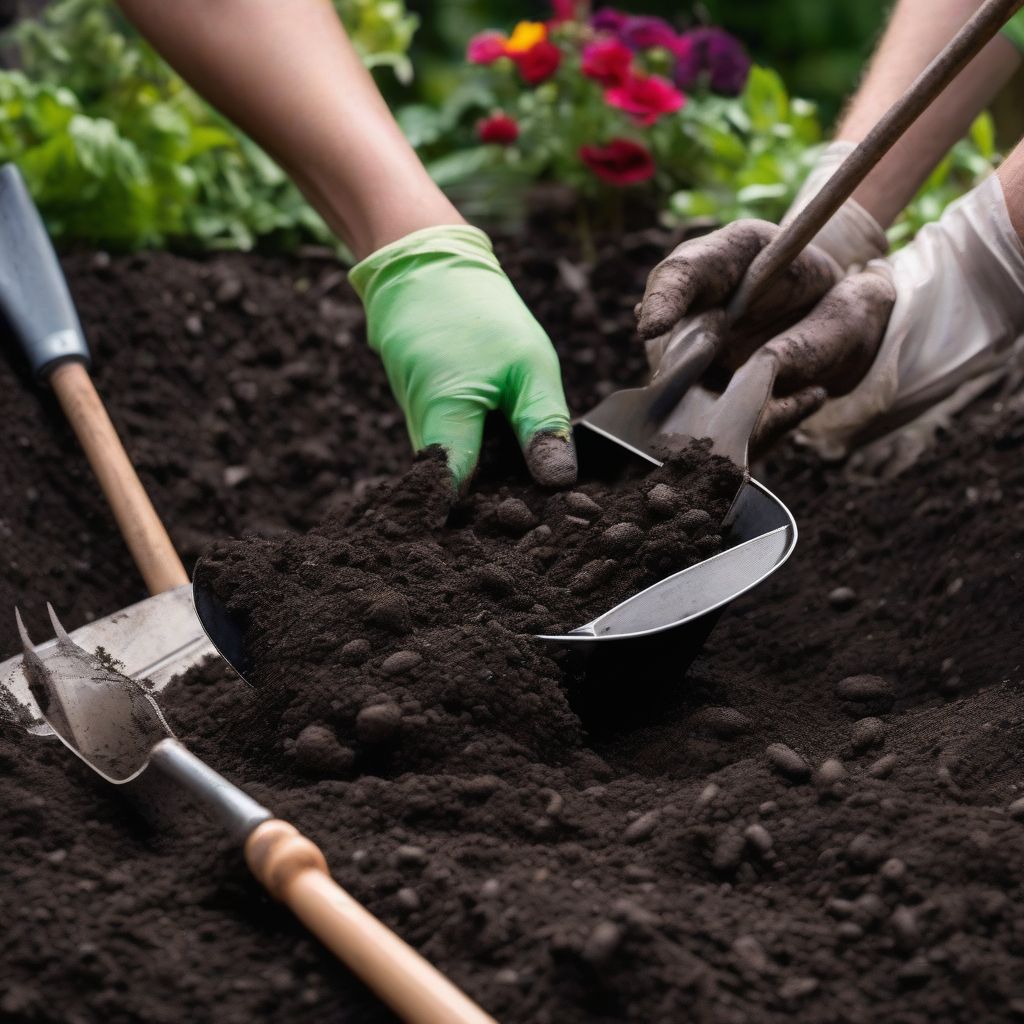Have you ever dreamt of biting into a juicy tomato, warm from the sun and bursting with flavor, picked straight from your own garden? The secret to such a delicious reward lies in the soil. Preparing organic soil for your vegetable garden isn’t just about digging a hole and throwing in seeds; it’s about creating a vibrant, living ecosystem that nourishes your plants from root to fruit. Let’s explore how to create the perfect organic soil for a thriving vegetable garden.
Understanding the Importance of Organic Soil
Organic soil is the cornerstone of healthy, flavorful vegetables. Unlike conventional soil that often relies on synthetic fertilizers, organic soil focuses on building a natural balance of nutrients through the incorporation of organic matter. This organic matter, such as compost, aged manure, and cover crops, provides a slow-release source of nutrients, improves soil structure, enhances water retention, and fosters beneficial microbial life. This creates a robust environment where your vegetables can truly flourish. “Healthy soil equals healthy plants,” as my mentor, Dr. Jane Doe, author of “The Organic Gardener’s Handbook,” always says.
Gathering Your Materials
Before diving into soil preparation, gather the necessary materials. You’ll need:
- Compost: This is the black gold of organic gardening. It provides a wealth of nutrients and improves soil structure.
- Aged Manure: Adds nutrients and beneficial microbes. Ensure it’s well-aged to avoid burning your plants.
- Other Organic Matter: Consider leaf mold, shredded bark, or cover crops. These contribute to soil health and diversity.
- Garden Fork or Tiller: For loosening and aerating the soil.
- Shovel: For mixing in amendments.
- Soil Test Kit (optional): Helps you understand your soil’s pH and nutrient levels.
Step-by-Step Guide to Preparing Organic Soil
1. Clear the Area
Remove any existing vegetation, rocks, or debris from your garden bed.
2. Test Your Soil (Optional)
A soil test provides valuable insights into your soil’s composition and can guide you in choosing the right amendments.
3. Loosen the Soil
Use a garden fork or tiller to loosen the existing soil to a depth of 12-18 inches. This improves aeration and drainage.
4. Amend the Soil
Add your chosen organic matter. Aim for a ratio of roughly one-third organic matter to two-thirds existing soil. Mix thoroughly with a shovel.
5. Check the pH
Most vegetables thrive in a slightly acidic to neutral pH (6.0-7.0). Amend accordingly with lime (to raise pH) or sulfur (to lower pH).
6. Water the Bed
Give the prepared bed a good watering to help the organic matter integrate and settle.
Choosing the Right Organic Amendments
Compost: The Cornerstone of Organic Soil
Compost is essential for building healthy soil. It improves soil structure, provides essential nutrients, and supports beneficial microbes. There are various types of compost available, including homemade compost, vermicompost (worm castings), and commercially available compost.
Aged Manure: A Nutrient Boost
Aged manure, especially from herbivores like cows, horses, or chickens, offers a rich source of nutrients. Ensure it’s well-aged to avoid introducing pathogens or burning your plants.
Cover Crops: Nature’s Soil Builders
Cover crops, like clover or rye, are planted and then tilled back into the soil. They improve soil structure, add organic matter, and can suppress weeds.
Maintaining Your Organic Soil
Organic soil is a living ecosystem, and it needs ongoing care to maintain its health. Regularly add compost or other organic matter to replenish nutrients and improve soil structure. Practice crop rotation to prevent nutrient depletion and reduce pest pressure. Mulching helps retain moisture, suppress weeds, and further enrich the soil.
 Preparing Organic Soil for Vegetable Planting
Preparing Organic Soil for Vegetable Planting
Conclusion: Reap the Rewards of Healthy Soil
Preparing organic soil for vegetable planting is an investment in the health and vitality of your garden. By creating a nutrient-rich, living environment, you’ll be rewarded with robust plants, bountiful harvests, and incredibly flavorful vegetables. So, roll up your sleeves, get your hands dirty, and embark on the journey of creating a thriving organic vegetable garden! What are your favorite tips for preparing organic soil? Share your thoughts and experiences in the comments below!



